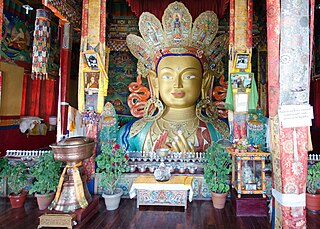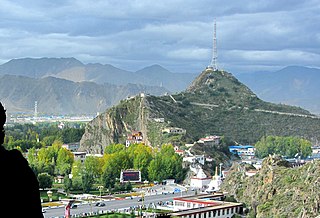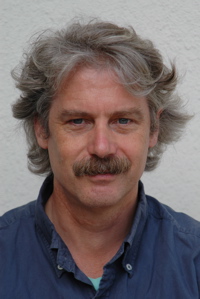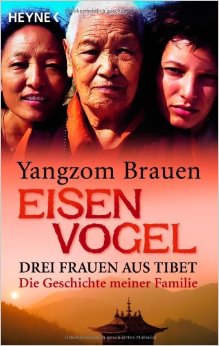Related Research Articles

Tibet, or Greater Tibet, is a region in the western part of East Asia, covering much of the Tibetan Plateau and spanning about 2,500,000 km2 (970,000 sq mi). It is the homeland of the Tibetan people. Also resident on the plateau are other ethnic groups such as Mongols, Monpa, Tamang, Qiang, Sherpa, Lhoba, and since the 20th century Han Chinese and Hui. After the annexation of Tibet by the People's Republic of China in 1951, the entire plateau has been under the administration of the People's Republic of China. Tibet is divided administratively into the Tibet Autonomous Region and parts of the Qinghai, Gansu, Yunnan and Sichuan provinces. Tibet is also constitutionally claimed by the Republic of China as the Tibet Area since 1912. Tibet is the highest region on Earth, with an average elevation of 4,380 m (14,000 ft). Located in the Himalayas, the highest elevation in Tibet is Mount Everest, Earth's highest mountain, rising 8,848 m (29,000 ft) above sea level.

While the Tibetan plateau has been inhabited since pre-historic times, most of Tibet's history went unrecorded until the creation of Tibetan script in the 7th century. Tibetan texts refer to the kingdom of Zhangzhung as the precursor of later Tibetan kingdoms and the originators of the Bon religion. While mythical accounts of early rulers of the Yarlung dynasty exist, historical accounts begin with the introduction of Tibetan script from the unified Tibetan Empire in the 7th century. Following the dissolution of the empire and a period of fragmentation in the 9th-10th centuries, a Buddhist revival in the 10th–12th centuries saw the development of three of the four major schools of Tibetan Buddhism.

Robert Alexander Farrar Thurman is an American Buddhist author and academic who has written, edited, and translated several books on Tibetan Buddhism. He was the Je Tsongkhapa Professor of Indo-Tibetan Buddhist Studies at Columbia University, before retiring in June 2019. He was the first endowed chair in Buddhist Studies in the West. He also is the co-founder and president of the Tibet House US New York. He translated the Vimalakirti Sutra from the Tibetan Kanjur into English. He is the father of actress Uma Thurman.

The vast majority of surviving Tibetan art created before the mid-20th century is religious, with the main forms being thangka, paintings on cloth, mostly in a technique described as gouache or distemper, Tibetan Buddhist wall paintings, and small statues in bronze, or large ones in clay, stucco or wood. They were commissioned by religious establishments or by pious individuals for use within the practice of Tibetan Buddhism and were manufactured in large workshops by monks and lay artists, who are mostly unknown. Various types of religious objects, such as the phurba or ritual dagger, are finely made and lavishly decorated. Secular objects, in particular jewellery and textiles, were also made, with Chinese influences strong in the latter.

A thangka is a Tibetan Buddhist painting on cotton, silk appliqué, usually depicting a Buddhist deity, scene, or mandala. Thangkas are traditionally kept unframed and rolled up when not on display, mounted on a textile backing somewhat in the style of Chinese scroll paintings, with a further silk cover on the front. So treated, thangkas can last a long time, but because of their delicate nature, they have to be kept in dry places where moisture will not affect the quality of the silk. Most thangkas are relatively small, comparable in size to a Western half-length portrait, but some are extremely large, several metres in each dimension; these were designed to be displayed, typically for very brief periods on a monastery wall, as part of religious festivals. Most thangkas were intended for personal meditation or instruction of monastic students. They often have elaborate compositions including many very small figures. A central deity is often surrounded by other identified figures in a symmetrical composition. Narrative scenes are less common, but do appear.

Alexander Berzin is a scholar, translator, and teacher of Tibetan Buddhism.

Glenn H. Mullin is a Tibetologist, Buddhist writer, translator of classical Tibetan literature and teacher of Tantric Buddhist meditation.
Michael Henss is a Swiss art historian, scholar and writer focussing on Asian art, especially that of Tibet and East Asia. He has written books, contributed articles for Asian art journals, and given seminars. Henss currently lives in Zürich, Switzerland, where he also runs a bookstore specializing in Asian and Near Eastern art.

Lobsang Tubten Jigme Gyatso (བློ་བཟང་ཐུབ་བསྟན་འཇིགས་མེད་རྒྱ་མཚོ་), officially the 8th Arjia Hotogtu (ཨ་ཀྱཱ་ཧོ་ཐོག་ཐུ།), born 1950 in Haiyan County, Qinghai) is one of the most prominent Buddhist teachers and lamas to have left Tibet. At age two, Arjia Rinpoche was recognized by Choekyi Gyaltsen, 10th Panchen Lama as the 20th Arjia Danpei Gyaltsen, the reincarnation of Je Tsongkhapa's father, Lumbum Ghe, the throne holder and abbot of Kumbum Monastery. He has trained with lineage teachers, such as the 14th Dalai Lama, the 10th Panchen Lama, and Gyayak Rinpoche—from whom he received many sacred teachings and ritual instructions.

Chagpori, Chakpori, Chokpori, Chagpo Ri is a spirit-mountain of Vajrapani in Lhasa, Tibet. It is south of Potala and just to the left when one is facing the Potala. It is considered to be one of the four holy mountains of central Tibet.
Charles Albert Edward Ramble is an anthropologist and former University Lecturer in Tibetan and Himalayan Studies at the Oriental Institute, Oxford University. Since 2009 he has been Professor and Directeur d'études at the Ecole pratique des hautes études, Paris. Between 2006 and 2013 he was elected president of the International Association for Tibetan Studies (IATS) and convened the 10th seminar of IATS at Oxford in 2003.

The Tibet Institute Rikon is a Tibetan monastery located in Zell-Rikon im Tösstal in the Töss Valley in Switzerland. It was established as a non-profit foundation in 1968, because Swiss laws resulting from the 19th century secularization movement did not allow for the establishment of new monasteries until 1973.

Losang Samten is a Tibetan-American scholar, sand mandala artist, former Buddhist monk, and Spiritual Director of the Chenrezig Tibetan Buddhist Center of Philadelphia. He is one of only an estimated 30 people worldwide who are qualified to teach the traditional art of Tibetan sandpainting. He has written two books and helped to create the first Tibetan sand mandala ever shown publicly in the West in 1988. In 2002, he was made a National Heritage Fellow by the National Endowment of the Arts. In 2004, he was granted a Pew Fellowship in Folk and Traditional Arts.
A brief chronology of the history of Tibet:

Urs App is a historian of ideas, religions, and philosophies with a special interest in the history and modes of interaction between East and West.
Jeff Watt is a scholar and curator of Himalayan and Tibetan Art and well known translator of Tibetan texts.

Eisenvogel is a Swiss book published by the Swiss-Tibetan writer, film director, and actress Yangzom Brauen. The full title of the biography is "Eisenvogel: Drei Frauen aus Tibet – Die Geschichte meiner Familie", which literally means Iron bird: Three women from Tibet – The history of my family. First published in 2009, the illustrated book is also distributed as in paperback, eBook, and audiobook forms in German. Brauen later became known for directing Who Killed Johnny.

Sonam Dolma Brauen is a Tibetan-Swiss contemporary painter and sculptor.

Per Kjeld Sørensen is a prominent Danish Tibetologist who specialises in Tibetan and Himalayan history, literature and culture. Since 1994 he has been Professor of Central Asian Studies at Leipzig University, Germany.

Tibet House US (THUS) is a Tibetan cultural preservation and education 501(c)(3) nonprofit founded in 1987 in New York City by a group of Westerners after the Fourteenth Dalai Lama, Tenzin Gyatso, expressed his wish to establish a cultural institution to build awareness of Tibetan culture.
References
- 1 2 Martin Brauen, Wisdom Publications
- ↑ Martin Brauen, Huffingtonpost
- ↑ Brigitta Niederhauser: Ein Berner Ethnologe in New York. In: Tages-Anzeiger , 12 March 2012. Online
- ↑ Holland Cotter, To Stimulate Souls, Cosmic Mansions With Many Rooms, The New York Times, 20 August 2009
- ↑ Ken Johnson, Mulling Mortality, in the East and in the West, The New York Times, 6 May 2010
- ↑ Visions of the Cosmos, Rubin Museum of Art
- ↑ Charlie Finch, JUNGER THAN THAT NOW
- ↑ The Cosmos – An Enduring Mystery, Museum Rietberg
- ↑ Meier, Philipp (16 July 2013). "Von weissen Yetis und grünen Lamas" . Retrieved 18 April 2024– via NZZ.
- ↑ "Kunst - Bill Viola: Mystische Videomalerei in der Kirche". Schweizer Radio und Fernsehen (SRF). 26 April 2014. Retrieved 18 April 2024.
- ↑ Im Loop zwischen Leben und Tod
- ↑ Homage to Caesar Ritz and the artist family Lorenz and Raphael Ritz
- ↑ "Journal of Buddhist Ethics" . Retrieved 18 April 2024.
- ↑ "The Twisted Paths of Dark Dreamin (Traumwelt Tibet — Westliche Trugbilder.) By Martin Brauen with Renate Kolle and Markus Vock" . Retrieved 18 April 2024.
- ↑ "'Grossmutter betet für mich'" [Grandmother uses to pray for me]. Schweizer Illustrierte (in German). 10 September 2009. Retrieved 12 April 2015.
- ↑ "interlaken : Tashi Brauen" . Retrieved 18 April 2024.
- ↑ Roger Durand, Elie Ducommun 1833–1906; Association "Genève: un lieu pour la paix", 11212 Grand-Lancy ISBN 2-88163-028-6